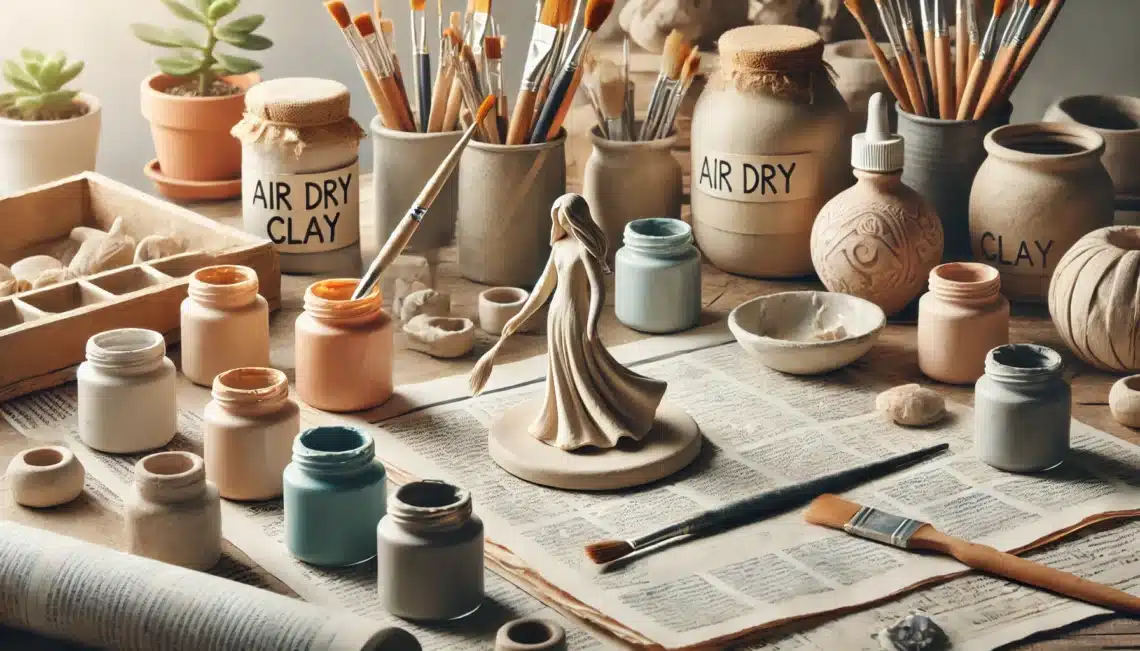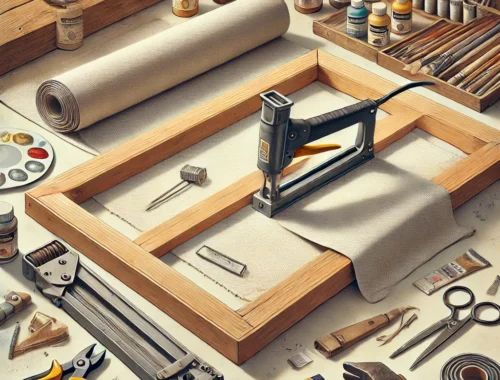
How to Glaze Air Dry Clay: A Step-by-Step Guide
05/02/2025



Air dry clay is a fantastic material for creating beautiful handmade pieces without the need for a kiln. However, finishing your clay project with a glaze not only adds shine but also protects your work and enhances its visual appeal. This guide will walk you through the steps to glaze air dry clay and achieve a professional-looking finish.
Why Glaze Air Dry Clay?
- Protection: Glazing helps seal the clay, making it more durable and resistant to moisture.
- Aesthetic Enhancement: Glazes can add shine, colour, and texture, elevating the appearance of your creations.
- Surface Smoothness: A glazed finish provides a smoother and more polished surface.
Types of Glazes for Air Dry Clay
Since traditional ceramic glazes require high-temperature firing, consider the following alternatives:
- Acrylic Sealers:
- Available in matte, satin, and glossy finishes.
- Ideal for a simple and protective glaze.
- Mod Podge:
- A popular craft glaze with multiple finishes.
- Easy to apply and provides a durable coat.
- Water-Based Varnish:
- Non-toxic and available in various sheens.
- Great for indoor projects.
- Resin:
- Provides an ultra-glossy and professional finish.
- Best for smaller pieces due to its curing process.
Materials Needed
- Finished air dry clay piece
- Sandpaper (optional, 400-600 grit)
- Paintbrush or foam brush
- Glazing material (acrylic sealer, Mod Podge, or varnish)
- Protective gloves (optional)
- Drop cloth or newspaper to protect your workspace
Step-by-Step Instructions
- Prepare the Clay Surface:
- Ensure your air dry clay piece is completely dry. This can take 24-72 hours depending on the thickness.
- Lightly sand the surface if it’s rough or uneven.
- Clean the Surface:
- Wipe the piece with a clean, dry cloth to remove dust and debris.
- Choose and Prepare Your Glaze:
- Select the appropriate glaze based on your desired finish.
- Stir the glaze gently if needed, avoiding air bubbles.
- Apply the First Coat:
- Use a clean brush to apply a thin and even coat of glaze.
- Brush in one direction to avoid streaks.
- Let It Dry:
- Allow the first coat to dry completely, following the product’s instructions (typically 1-2 hours).
- Apply Additional Coats:
- Repeat the process for 2-3 coats, allowing each layer to dry thoroughly.
- For resin, follow the curing instructions carefully.
- Final Drying:
- Once the final coat is applied, let the piece cure for 24 hours for maximum durability.
Tips for Best Results
- Avoid Thick Coats: Thin layers provide a smoother finish and reduce the chance of drips.
- Use a Well-Ventilated Space: Ensure proper ventilation when working with glazes or varnishes.
- Test First: Try the glaze on a test piece to see how it reacts with the clay.
- Handle with Care: Glazed air dry clay is still more fragile than kiln-fired ceramics.
Troubleshooting Common Issues
- Sticky Finish: Ensure each coat is fully dry before applying the next layer.
- Streaky Appearance: Use a foam brush or apply thinner coats.
- Bubbles: Stir the glaze gently and avoid over-brushing.
Conclusion
Glazing your air-dry clay projects is a rewarding way to add polish and protection to your creations. By following these steps and tips, you can achieve beautiful, long-lasting results. Happy crafting!
What are your favourite glazing techniques? Share your experiences in the comments below!
You May Also Like

Essential Watercolour Supplies and Everyday Substitutes
28/12/2023
Introduction to Marbling Art: The Mesmerizing Dance of Colours
29/01/2025

